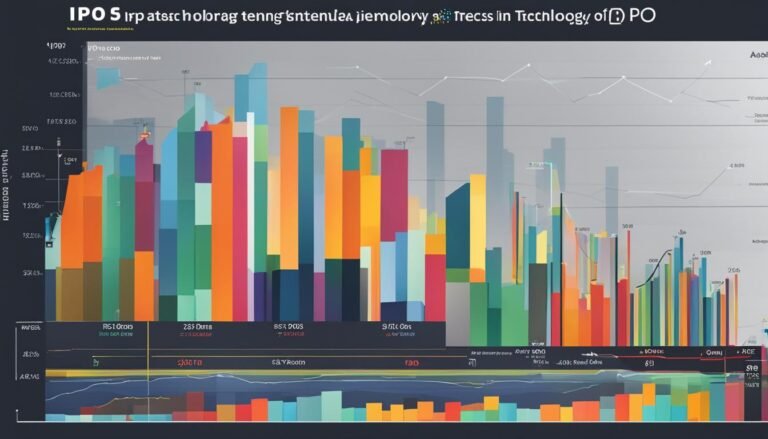Efficiency in Financial Reporting: Best Practices
Did you know that companies worldwide spend an average of 18 hours per week on financial reporting? That’s equivalent to almost one full workday! With such a significant investment of time and resources, it becomes crucial for businesses to optimize their financial reporting processes to ensure accuracy, effectiveness, and efficiency.
Key Takeaways:
- Implementing best practices is essential for streamlining and improving financial reporting processes.
- Efficient financial reporting involves understanding and utilizing different types of financial reports such as income statements, balance sheets, and statements of cash flows.
- Following GAAP accounting principles ensures consistency and transparency in financial reporting.
- Data accuracy, integrity, and validation are vital for reliable financial reporting.
- Leveraging technology tools and software can enhance the efficiency and accuracy of financial reporting.
What is Financial Reporting and Analysis?
Financial reporting and analysis play a fundamental role in assessing a company’s performance and overall financial health. By gathering and evaluating financial data, decision-makers gain insights into vital elements such as revenue, expenses, assets, liabilities, and equity. Through various financial reports, businesses can monitor their financial progress and address any potential issues that may arise. Key financial reports include monthly, quarterly, and annual reports, as well as accounts receivable and accounts payable reports, providing a comprehensive view of the company’s financial status.
Financial reporting and analysis contribute to effective business performance assessment and guide decision-making processes. By scrutinizing the company’s revenue generation, cost structure, and resource allocation, it enables stakeholders to determine whether the business is meeting its financial objectives and maintain sustainable growth. The insights obtained from financial reports help identify areas for improvement and enable proactive decision-making to enhance financial performance and ensure long-term success.
“Financial reporting and analysis provide crucial insights into a company’s financial health and facilitate data-driven decision-making to optimize business performance.”
| Financial Reports | Description |
|---|---|
| Monthly reports | Summarize key financial data on a monthly basis, allowing for continuous monitoring and performance assessment. |
| Quarterly reports | Provide a comprehensive overview of the company’s financial performance and progress over a specific quarter. |
| Annual reports | Summarize the financial results and operations of a company over the course of a fiscal year, including financial statements and management analysis. |
| Accounts receivable reports | Track outstanding customer payments, ensuring timely collection and managing cash flow. |
| Accounts payable reports | Detail the company’s outstanding payments to suppliers, supporting effective cash management and organizational stability. |
Benefits of Financial Reporting and Analysis
- Provide a comprehensive view of a company’s financial position.
- Facilitate data-driven decision-making and strategic planning.
- Identify areas for improvement and cost-saving opportunities.
- Aid in the evaluation of business performance and the tracking of financial goals.
- Ensure compliance with financial regulations and accounting standards.
“Financial reporting and analysis are indispensable tools for monitoring financial health, ensuring transparency, and making informed decisions.”
Essential Financial Reports
When it comes to financial reporting, several key reports are essential for business owners and CEOs to understand and monitor. These reports provide valuable insights into a company’s financial performance and health, allowing stakeholders to make informed decisions. Let’s explore the most crucial financial reports:
1. Income Statement
The income statement summarizes a company’s revenue, expenses, and profits over a specific period, usually monthly, quarterly, or annually. It provides a comprehensive overview of a company’s financial performance, showcasing its ability to generate profits.
2. Balance Sheet
The balance sheet provides a snapshot of a company’s financial position at a given time. It presents the company’s assets, liabilities, and shareholders’ equity, reflecting its financial health and solvency. The balance sheet is crucial for evaluating a company’s liquidity and assessing its ability to meet its financial obligations.
3. Statement of Cash Flows
The statement of cash flows tracks the inflows and outflows of cash within a company over a specific period. It categorizes cash flows into operating activities, investing activities, and financing activities, offering insights into a company’s cash management and liquidity. This report is vital for understanding a company’s ability to generate cash and its cash flow position.
4. AR Aging Report
The AR aging report, also known as the accounts receivable aging report, helps track and manage outstanding customer payments. It categorizes customer accounts based on the length of time an invoice has been outstanding, giving insights into the company’s collection efforts and identifying potential cash flow challenges.
5. Budget vs Actual Report
The budget vs actual report compares a company’s actual financial performance to its budgeted results. It helps identify variances between expected and actual outcomes, enabling management to analyze the causes of deviations and take corrective actions. This report is instrumental in evaluating a company’s financial planning and forecasting accuracy.
Understanding and utilizing these essential financial reports provides a comprehensive view of a company’s financial position, performance, and cash flow. By leveraging the insights gained from these reports, business owners and CEOs can make informed decisions and drive the financial success of their organizations.
| Assets | Liabilities | Equity |
|---|---|---|
| Cash and Cash Equivalents | Accounts Payable | Share Capital |
| Accounts Receivable | Short-term Debt | Retained Earnings |
| Inventory | Long-term Debt | |
| Property, Plant, and Equipment | Other Current Liabilities | |
| Investments | Other Long-term Liabilities |
Implementing GAAP Accounting Principles
GAAP accounting principles, or Generally Accepted Accounting Principles, serve as a crucial foundation for financial reporting. These principles outline the standard guidelines and practices to ensure consistency and transparency in financial information. By adhering to GAAP, companies can maintain accurate and reliable financial statements, providing a clear snapshot of their financial position and performance.
“GAAP accounting principles provide a framework for companies to prepare financial statements that accurately reflect their financial position and performance.”
Key principles within GAAP include:
- Historical Cost Principle: This principle states that assets and liabilities should be recorded at their original cost, ensuring that financial statements reflect the value at the time of acquisition.
- Full Disclosure Principle: Companies must provide all relevant information in their financial statements for users to make informed decisions. This includes any material information that may impact the financial position or performance of the company.
- Matching Principle: This principle ensures that expenses are matched with the revenue generated during the same accounting period, providing a realistic picture of the company’s profitability.
- Revenue Recognition Principle: Revenue should be recognized when it is earned and measurable, regardless of when the payment is received.
- Materiality Principle: Materiality refers to the significance of an item or event in influencing the judgment of financial statement users. This principle ensures that only relevant and material information is included in the financial reports.
Benefits of Implementing GAAP Accounting Principles
Adhering to GAAP accounting principles offers several benefits for companies, including:
- Consistency: GAAP provides a consistent and standardized framework for financial reporting, making it easier for stakeholders to compare financial information across different companies and industries.
- Transparency: By following GAAP accounting principles, companies provide transparent financial information that accurately represents their financial position and performance. This promotes trust and confidence among stakeholders.
- Reliability: GAAP ensures that financial statements are prepared using consistent and reliable methods, allowing users to make informed decisions based on accurate and comparable data.
Implementing GAAP accounting principles is essential for companies looking to maintain financial information standards, ensure consistency, and provide transparent reporting to their stakeholders.
| GAAP Accounting Principles | Benefits |
|---|---|
| Consistency | Allows for easy comparison of financial information |
| Transparency | Promotes trust and confidence among stakeholders |
| Reliability | Ensures accurate and comparable financial data |
The Four C’s of Good Data
When it comes to financial reporting, the quality of data is of utmost importance. To ensure accurate and reliable financial reports, companies must focus on the four C’s of good data: accuracy, integrity, completeness, and consistency.
Accuracy: Data accuracy is paramount in financial reporting. It is essential to gather precise and reliable data that reflects the true financial position of the company. Without accurate data, the financial reports may provide misleading information and hinder decision-making.
Integrity: Maintaining data integrity is crucial to ensure the trustworthiness and reliability of financial reports. Data should be free from unauthorized alterations, unauthorized access, or any form of manipulation. A strong data governance framework helps maintain data integrity by implementing the necessary controls and security measures.
Completeness: Financial reports must include all relevant and necessary data to present a comprehensive picture of the company’s financial performance. Incomplete data can lead to inaccurate analysis and misinterpretation of the company’s financial health. Regular data audits and checks should be conducted to verify the completeness of financial data.
Consistency: Consistency in data is essential for meaningful financial analysis and comparison. Financial reports should use consistent metrics, formats, and definitions to ensure accurate interpretation and trend analysis. Establishing standardized reporting processes and data validation procedures helps maintain consistency in financial reporting.
By prioritizing accuracy, integrity, completeness, and consistency, companies can ensure the quality and reliability of their financial reporting. Implementing strong data validation processes and data governance frameworks plays a vital role in maintaining the four C’s of good data. Regular data audits and checks help verify the accuracy and completeness of financial data, enabling informed decision-making.
Leveraging Technology for Efficient Reporting
Technology plays a vital role in streamlining the financial reporting process and enhancing efficiency. By leveraging advancements in technology, businesses can optimize their reporting practices and improve decision-making based on accurate and timely financial data.
One of the key technological tools that facilitate efficient reporting is financial reporting software. This software automates repetitive tasks, reducing the chances of human errors and ensuring the accuracy of financial data. With the help of financial reporting software, companies can generate comprehensive reports, such as income statements, balance sheets, and cash flow statements, with just a few clicks.
Furthermore, data automation technologies enable the seamless collection and consolidation of financial data from various sources. Automating these processes eliminates the need for manual data entry and reduces the risk of errors caused by human intervention. As a result, companies can save time and resources while ensuring the accuracy and integrity of their financial data.
Benefits of Data Analysis Tools
Data analysis tools are essential for efficient reporting as they provide valuable insights into financial performance, trends, and patterns. These tools allow businesses to analyze large volumes of data efficiently and identify areas for improvement or cost-saving opportunities.
“Data analysis is a powerful tool that can help businesses uncover hidden patterns and trends, enabling them to make informed decisions and drive growth.”
Additionally, data analysis tools enable companies to conduct scenario analysis and forecasting models, which aid in strategic planning and risk management. By leveraging these tools, businesses can gain a competitive edge and adapt to changing market dynamics.
Prioritizing Data Security
In an era of increasing cyber threats, data security is of utmost importance when it comes to financial reporting. Businesses must prioritize the protection of financial data from unauthorized access or breaches.
Implementing robust data security measures and encryption protocols helps safeguard sensitive financial information. Regular security audits and vulnerability assessments can identify potential weaknesses and mitigate risks. By incorporating data security practices, businesses can ensure the confidentiality, integrity, and availability of their financial data.
Overall, technology empowers businesses to efficiently report financial information, ensuring accuracy, timeliness, and compliance. By adopting financial reporting software, leveraging data automation, utilizing data analysis tools, and prioritizing data security, companies can enhance their reporting processes and make data-driven decisions with confidence.
Establishing a Robust Financial Reporting Framework
Establishing a robust financial reporting framework is essential to ensure accurate and reliable reporting for businesses. This framework includes various components such as reporting objectives, accounting regulations, reporting responsibilities, and reporting policies and procedures. Let’s delve deeper into each of these elements and understand their significance in the financial reporting process.
Reporting Objectives
Reporting objectives play a crucial role in guiding the financial reporting process. These objectives outline the specific goals and outcomes that the organization aims to achieve through its reporting activities. By defining clear and measurable reporting objectives, companies can align their financial reports with their overall strategic goals. This ensures that the information provided in the reports is relevant, timely, and insightful.
Accounting Regulations
In the realm of financial reporting, accounting regulations such as GAAP (Generally Accepted Accounting Principles) or IFRS (International Financial Reporting Standards) provide a standardized framework for preparing and presenting financial statements. Compliance with these regulations ensures consistency, comparability, and transparency in financial reporting across different organizations and industries. Adhering to these accounting standards also enables stakeholders to make informed decisions based on reliable and accurate financial information.
Reporting Responsibilities
Reporting responsibilities refer to the assigned roles and individuals responsible for the preparation, review, and approval of financial reports. It is essential to clearly define and document these responsibilities to ensure accountability and consistency in reporting practices. By allocating reporting responsibilities to competent individuals, companies can maintain accuracy, reliability, and confidentiality in their financial reporting process.
Reporting Policies and Procedures
Reporting policies and procedures provide a set of guidelines and instructions for the preparation, presentation, and disclosure of financial information. These policies and procedures help facilitate standardized practices, mitigate reporting risks, and ensure compliance with relevant accounting standards. A well-documented reporting process, supported by comprehensive policies and procedures, fosters consistency, reliability, and traceability throughout the financial reporting cycle.
Overall, establishing a robust financial reporting framework is essential for organizations to maintain data accuracy, consistency, and accountability in their reporting practices. By aligning reporting objectives with strategic goals, complying with accounting regulations, defining clear reporting responsibilities, and implementing robust reporting policies and procedures, companies can enhance the quality and reliability of their financial reports.
Ensuring Accuracy and Integrity in Financial Reporting
Accuracy and integrity are fundamental principles that underpin the reliability of financial reporting. To maintain the trust of stakeholders, companies must prioritize the delivery of accurate and dependable financial information. This section delves into the importance of internal controls, internal audits, and data governance practices in safeguarding the accuracy and integrity of financial reports.
Internal Controls: Mitigating Risks and Ensuring Reliable Information
Establishing robust internal controls is essential for maintaining the accuracy and integrity of financial reporting. Internal controls encompass the policies, procedures, and practices designed to ensure the reliability of financial information. By implementing internal controls, companies can mitigate risks, prevent fraud, and maintain the accuracy of financial records.
Effective internal controls include segregation of duties, where different individuals are responsible for separate aspects of financial reporting, reducing the likelihood of errors or intentional misstatements. This separation of responsibilities helps ensure that financial information is accurate, complete, and free from manipulation.
Furthermore, internal controls create a system of checks and balances that enhance the accuracy and reliability of financial reporting. They facilitate the detection and prevention of errors, irregularities, or unauthorized actions, ensuring that the financial statements represent a true and fair view of the company’s financial position.
Internal Audits: Assessing Compliance and Identifying Risks
Regular internal audits play a crucial role in ensuring the accuracy and integrity of financial reporting. Internal audits are independent evaluations conducted to assess the effectiveness of internal controls and identify potential risks or deficiencies in the financial reporting process.
Through internal audits, companies can evaluate their adherence to established policies and procedures, assess compliance with accounting standards and regulations, and identify areas for improvement. Internal auditors provide valuable insights into the effectiveness of internal controls, helping businesses enhance their financial reporting practices.
Internal audits also contribute to the prevention and detection of fraudulent activities within the financial reporting process. By reviewing and evaluating financial transactions, internal auditors can identify irregularities, address weaknesses in controls, and implement corrective measures to ensure the accuracy and integrity of financial reporting.
Data Governance: Protecting the Completeness and Accuracy of Financial Data
Robust data governance practices are essential for maintaining the accuracy and integrity of financial data. Data governance encompasses the processes, policies, and controls used to manage and protect data throughout its lifecycle.
Companies should establish comprehensive data governance frameworks that include data validation processes, data quality checks, and data security measures. These frameworks ensure the completeness, accuracy, and reliability of financial data used in reporting.
Data validation processes involve verifying the accuracy, consistency, and integrity of financial data through internal checks, reconciliations, and external audits. By validating financial data, companies mitigate the risk of errors, inconsistencies, or omissions that could compromise the accuracy and reliability of financial reporting.
Additionally, companies should prioritize data security to prevent unauthorized access or data breaches that could compromise the integrity of financial reports. Implementing secure storage systems, access controls, and encryption techniques protects the confidentiality and accuracy of financial data.
Overall, by implementing robust internal controls, conducting regular internal audits, and establishing effective data governance practices, companies can ensure accuracy and integrity in their financial reporting processes. This commitment to reliable information enhances trust and confidence among stakeholders, facilitating informed decision-making and contributing to the long-term success of the organization.
Enhancing Information Transparency and Disclosure
Transparency and disclosure are paramount in financial reporting as they enable shareholders to gain a comprehensive understanding of a company’s financial standing. To facilitate effective communication, financial statements should be presented in a concise and easily understandable manner, incorporating relevant accounting policies and estimates.
One way to enhance information transparency is by integrating non-financial information, such as environmental, social, and governance (ESG) factors, into financial reports. This broader scope provides stakeholders with a more holistic view of the company’s performance and its impact on various stakeholders.
Another crucial aspect of enhancing transparency is adopting international financial reporting standards. These standards, such as Generally Accepted Accounting Principles (GAAP) or International Financial Reporting Standards (IFRS), help promote global consistency and facilitate stakeholders’ understanding of the company’s financial records.
By providing clear and comprehensive information, companies can instill confidence and trust among shareholders, fostering stronger relationships and facilitating informed decision-making.
Conclusion
Efficient and accurate financial reporting is crucial for the success of any business. By implementing best practices such as knowing essential financial reports, following GAAP accounting principles, ensuring data accuracy and integrity, leveraging technology, and establishing a robust reporting framework, companies can optimize their financial reporting processes.
Continuous improvement, monitoring, and reviewing of reporting performance are key to enhancing the quality and reliability of financial reports. By prioritizing accuracy and efficiency in financial reporting, companies can make informed decisions and achieve long-term financial success.
As technology advances, embracing automation and data analytics tools can further enhance financial reporting capabilities. Striving for continuous improvement by proactively identifying areas for optimization and adopting industry best practices will ensure that companies stay ahead and adapt to the changing financial landscape.
It is essential for companies to remain committed to optimizing financial reporting processes, as this not only strengthens their financial governance but also enhances stakeholder confidence and trust. By consistently seeking opportunities for improvement and embracing a culture of continuous learning and innovation, companies can successfully navigate the ever-evolving financial reporting landscape.







